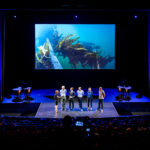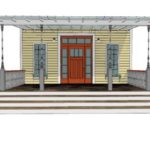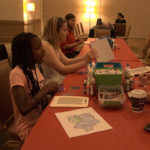
It has been 25 years since the Americans With Disabilities Act of 1990 — a federal law aiming to help remove barriers for people with disabilities — was passed. As part of a citywide initiative in New York City to celebrate the silver anniversary of the historic legislation, Dance/NYC organized a free day-long conference for disabled dancers that drew about 300 attendees.
Held on July 8, the conference — Disability. Dance. Artistry. — wasn’t an isolated effort to embrace this community. Indeed, it was part of the mission of Dance/NYC, which as an organization devoted to “the knowledge, appreciation, practice, and performance of dance” in the New York metropolitan area also “embeds values of equity and inclusion” in all aspects of its practice.
That element of inclusion was central to the program. Often when people think of pairing those who have disabilities and dance, therapy comes to mind, according to Lane Harwell, Dance/NYC’s executive director. But the conference’s focus was on the artistic practice of disabled dancers, Harwell said, and “on working toward a future where disabled artists flourish.”
The first of four panel discussions addressed how to expand opportunities for dance creation by disabled artists and whether performances could help generate new meanings around the ideas of disability, dance, and who dancers are or should be. Other panels explored how to remove barriers around crafting and presenting performances; creating new and better dance spaces for dancers with disabilities; and dance instruction in New York City public schools for students with disabilities.
MINDING LOGISTICS
With inclusivity as the conference’s overall theme, Dance/NYC had to make sure that the program itself was accessible to those with a wide variety of disabilities. First, the venue had to comply with accommodations required by the ADA — and City University of New York’s John Jay College of Criminal Justice fit the bill. The building offers elevators and ramps for wheelchair accessibility, and features assistive listening devices and technology. All video presentations had closed captioning available along with audio descriptions for visual content.
While Dance/NYC also follows best practices for accessibility provided by the National Endowment for the Arts, those guidelines required greater thought, Harwell said. “The number of disabled New Yorkers in the audience was high,” he said, “so we had as many accessibility features in place as possible, and monitored very carefully the information we got from registration and calls to the office. It was really a person-by-person approach.”
That effort began with Dance/NYC making the conference’s online registration tool more accessible, including creating large-print pages and contrast options for those with low vision. The organization recruited both disabled and non-disabled staff and volunteers, and hired sign-language interpreters. Before the event, volunteers and staff members received sensitivity training on how to help boost engagement by disabled patrons, provided by the New Jersey Theatre Alliance (see Breakout, p. 38).
“One of the many takeaways is to ask the question, ‘How might we make your experience more comfortable today?’” Harwell said. “You can ask that to every guest — disabled and not. It’s not targeting anyone in particular, but embracing access as a way of heightening the experience.”
The conference ended with music, and an invitation for attendees to dance together. “The intention behind it was to get disabled and non-disabled people dancing together,” Harwell said. “That’s an experience that does the work a conversation can’t do.”
Cultural Access
The New Jersey Theatre Alliance (NJTA) provides sensitivity training around accessibility for those with disabilities to the arts community and other event producers through its Cultural Access Network Project. The training sessions often feature a panel of people with disabilities who can help guide organizations in effective communication, assistance, and accessibility. Trainers encourage staff members and event volunteers, particularly those who work directly with the public, to attend.
NJTA also offers a host of online resources for event planners, including marketing tips for engaging people with disabilities, and an Americans With Disabilities Act checklist to ensure that organizations comply and embrace the federal law’s requirements. There’s also a guide for making websites and online event registration easier to use for people with disabilities.
Dance/NYC’s Lane Harwell found the sensitivity training that NJTA provided to staff and conference volunteers insightful. One thing he learned, he said, was “not to over-assist. Be available and make it known that there are staff and volunteers to help, but don’t make assumptions about what people can and can’t do.”



